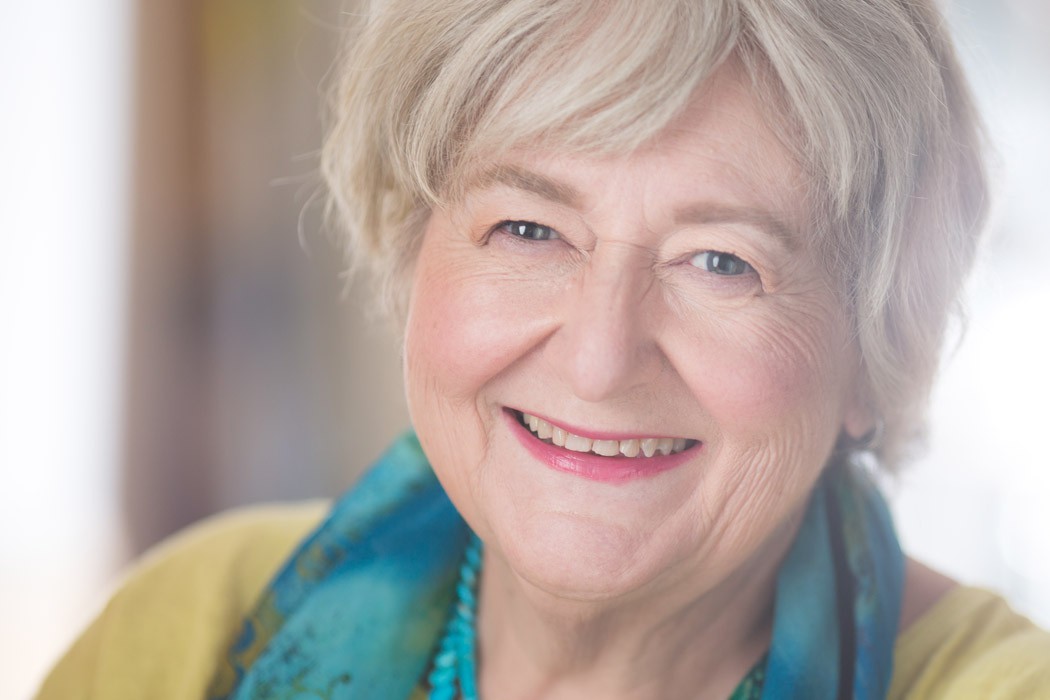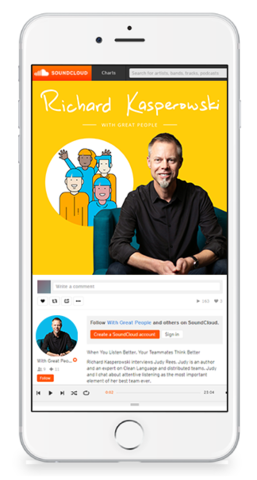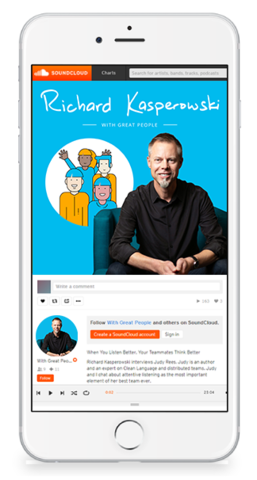Categories
Diana Larsen: Do You Know What True Compatibility Is?
In this episode, Richard interviews Diana Larsen. Diana is a true agile pioneer, a visionary pragmatist, and one of the highest authorities on agile retrospectives. She co-authored several books, including Agile Retrospectives: Making Good Teams Great; Liftoff: Start and Sustain Successful Agile team; and Liftoff: Launching Agile Projects and Teams. Diana currently acts as a chief connector for the Agile Fluency Project. Building on her unique experiences working with an extraordinary number of successful teams, Diana shares with us a few tips on how to achieve compatibility within your team. When you finish listening to the episode, connect with Diana on Twitter and LinkedIn, and check out the Agile Fluency Project at https://www.agilefluency.org.
Diana Larsen: Do You Know What True Compatibility Is?
with Diana Larsen
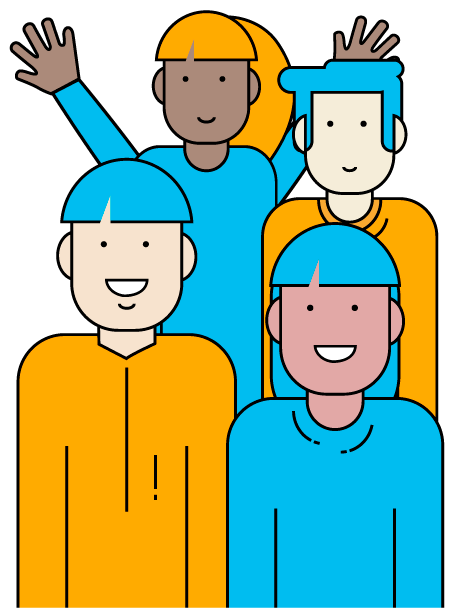
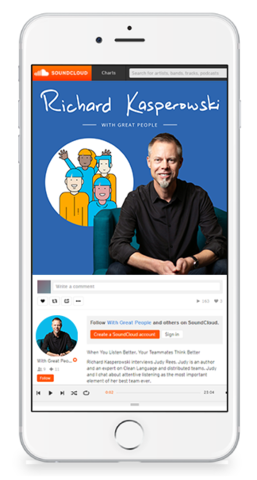
TRANSCRIPT
Richard 00:11
Hey, friends, welcome back to With Great People – the podcast for high-performance teams. I’m Richard Kasperowski.
Imagine a team in which everyone had identical skills and expertise, the same opinions, the same preferences. A team like this would be completely useless. For a successful team, we need compatibility, not uniformity. In this episode, I talk with Diana Larsen, one of Agile’s true pioneers, a visionary pragmatist and one of the highest authorities on Agile retrospectives. Building on her unique experiences working with an extraordinary number of successful teams, Diana summarizes the characteristics of a great team in one word – co-intelligence. Keep listening to learn what co-intelligence means and what you need to do to achieve it within your team. To support this podcast, visit my website, kasperowski.com.
Richard:
Our special guest today is Diana Larsen. Hi, Diana. Welcome to the show.
Diana:
Hi, Richard. I’m glad to be here.
Richard:
Yeah. Thanks. I’m so happy you could join us. Will you introduce yourself to our listeners?
Diana:
Well, I’m Diana Larsen, I live in Pacific Northwest in Portland, Oregon. And these days I actually also get to work here quite a bit. In my prior career, I tended to work all over the place, other places but not so much here. But now, I am winding down my coaching and consulting practice some and ramping up my practice as a cofounder of the Agile Fluency Project.
Richard:
Oh, cool.
Diana:
A lot of people when they get to my age, decide to retire and take on volunteering or they have a boat or go golfing or something like that, travel. For me, I have a startup as my retirement project.
Richard:
That’s super cool.
Diana:
So it’s one of the loves of my life [inaudible 00:02:15] it’s allowing me to mentor and pass along a lot of what I’ve learned in all those decades of coaching and consulting so that other folks can also benefit from some of the things that I’ve learned. We do all kinds of training and mentoring for coaches and consultants who are working in the Agile space, using the Agile Fluency model and the derivative things that have come out of that. Written a few books in the Agile world and have been working with folks in the Agile space since 1997 and ’98.
Diana:
I first began meeting people in ’97. So I’ve been hanging around this community for quite some time now. I mean, interestingly, with the topic of this podcast, what brought me here was my work was helping folks do work process redesign. So when I met some of the Agile manifesto signers, we discovered that we had a lot of interests in common in terms of helping teams be as effective as they could possibly be. So that’s primarily been my role in the Agile community, is bringing forward those things I’ve learned over the whole course of my career, even before I was in the Agile space about how to help teams be effective and how to help organizations enable teams to be effective and everything around that, in that area.
Richard:
All right. And it’s definitely a blessing to be able to work closer to home and the work you’ve been doing, I got to say, thank you for the Agile Fluency Project and all the related tools, the books, thank you for all of that. It’s been a blessing to me. And I share this stuff as much as I can with others as well.
Diana:
Well, thank you. Thank you. Yeah.
Richard:
Now, this is a podcast about teams and you mentioned teams and having great teams is one of the things that you’re about. What is the best team that you have been a part of in your entire life?
Diana:
Yeah. I have worked with a lot of teams over my career but in terms of being a part of a team, I’ve been thinking a lot about that. And I think one of the best teams that I was a part of was a team where we actually… it was during the dot-com bust. And a lot of organizations just were not hiring consultants and coaches. They were tightening their belts and tightening their belts and nothing extraneous. And another way they were tightening their belts is that they were beginning to downsize, rightsize, rebalance, whatever you want to call it. But they were letting go of a lot of their employees. And my role in that… I’m not a career counselor. I got to know a lot of career counselors and I got to know a lot of techniques around resumes and things like that. But my role was in managing outplacement centers. So managing career counselors.
Richard:
Managing career counselors.
Diana:
I mean, managing knowledge workers, right?
Richard:
Yeah.
Diana:
And I worked with group of folks who used even then… This was in the late 90’s, about the same time when I had become to be aware of Agile. But even then, we were using a lot of the techniques that later on I saw used in Agile teams and reflected in the manifesto and so on. So by the time I got to see the 12 principles of the Agile manifesto, I was already very familiar with working in that way. And our group of consultants had a client that worked on a 24 hour day. They had a day shift, an evening shift and a graveyard shift and so on.
Diana:
And so, in order to help everyone find their next job, parts of our group had to work the day shift at evening shift and graveyard shift and so on. So every day we had three standup meetings. We had a standup meeting at the close and opening of every shift change. So the counselors that had been working on the shift that was just [inaudible 00:06:44] closing down and the counselors that were just coming on for their shift would meet and talk about what had happened, what new information was interesting and available to everybody, what new things people were trying or new clients they had connected with that posed interesting problems.
Diana:
And then we would all look at those and we didn’t spend a lot of time on it. We spent 15 to 20 minutes but we would do that shift change, stand up meeting. And we did it as a standup meeting every time. And everyone in that group, we did one-on-one counseling and career counseling. We also provided materials for people. We did short training programs on what to expect in your interview or how to conceptualize the next job you wanted. So we had a lot of different services that we were providing.
Diana:
Plus, we were spending quite a bit of time creating our own workspace because we were in kind of… We were working for one large company that was having to let go of quite a lot of people. They’re actually shutting down one whole site. And so, we were trying to help all of those people either find a place at another site within that company or just another job in there [inaudible 00:08:10], where they wouldn’t have to move to the other side. So in order to keep our spirits up, we also paid a lot of attention to what our workspace was like.
Diana:
And we had a lot of fun. We used to talk about how things were changing all the time, right? Expectations were changing all the time. New information was changing all the time. So the joke became that we all needed to be as flexible as Gumby. And so Gumby became our mascot. So there were lots of things like that that I think are still ideas that are good for just about any team. And we were doing those in the late 90’s, very early on. And it made it a much better place to work. And it was very stressful place to work, as you can imagine. And at one point, one of our team members really had a breakdown.
Diana:
So we had to respond to that change and help her get help and also get her out of the loop in terms of serving our clients, because we wanted to insulate our clients from the additional stress that having her being stressed out could generate. So, it wasn’t all honey and roses. We had our challenges along the way but it was extraordinarily satisfying and fun place to work. I’m still in touch with some of those people. And what I loved about that work… I was just talking to someone the other day about the five keys from that Project Aristotle at Google, the psychological safety, independability. And it makes me think back about that because we knew we were having a good impact on these people’s lives. Very often they found new jobs that they loved even more and they never would have made that move as long as they had the safety and security of the job in the big company.
Diana:
But some of them started their own businesses, some of them went back to school. They all got opened up to new opportunities in their lives. And so, we knew we were having a good impact and we felt like it was really meaningful work. And of course, we worked very hard to create psychologically safe environment to the best of our ability. And people did step up and do the things they… So we had all those characteristics that Project Aristotle talks about. And that’s part of the reason it was such a good team.
Richard:
All right. It’s a beautiful story. And a lot of the things you talk about as I’m thinking about other… you call them non-agile teams. I see them doing some of these things.
Diana:
Absolutely.
Richard:
I’ve been in hospitals and then I’ve seen the doctors… the medical team, all the doctors, nurses and everybody get together at the shifts change.
Diana:
Right.
Richard:
I just happened to have been there at the shift change time of day and I see them doing it. They’re standing up, they’re huddles around some chart on a wall and they’re sharing.
Diana:
Some of these things are just best practices, right?
Richard:
Yeah.
Diana:
Just best practices. And a lot of that is what’s reflected, of course, on the Agile Fluency model, a lot of that’s reflected in the focusing [inaudible 00:11:29], because that’s where you move from a group of individual contributors to really working collaboratively as a team. And so, those can be there right from the beginning or at least working on getting good at those, could be there right from the beginning when people make that turn into, we think working in an Agile way will give us better outcomes.
Richard:
Right. And so, I’m curious now, I have my own definition of team that I use and I share with people, how do you define a team? What is a team for you?
Diana:
Well, I like the… I still go back to the Katzenbach and Smith because I think teams fit better when we think in terms of cross-functionality. I had a colleague one time who was working with the group and they were working on a set of what we call simple rules or principles for their work, not working agreements, not the daily, we’re all going to show up on time for meetings. But the larger philosophy, their approach to work. And they came up with a statement that said, “We play basketball, not bowling.”
Richard:
Okay. What is that [inaudible 00:12:40]?
Diana:
Right? I mean, so there are basket… The idea of cross-functional people on the court, each doing their job together, handing off smoothly, right? For me, that’s teamwork. Each person bowling in their own lane and then just adding up scores. It’s a nice collective, it’s a nice work group. It’s a nice cooperating toward a similar outcome but that’s not the same way I think of teams, particularly not work teams. I think of work teams as being all working toward the same goal, reducing that intra team competitiveness and focusing more on the outcomes that the whole team could create together and finding the right way to work together, to do that, feeling jointly accountable to the rest of the organization, committed to not only the nature of the work and the work at hand but committed to the wellbeing of us all doing that work together.
Diana:
So there are a number of qualities that I look for that for me, indicate a really high functioning, collaborative team of people.
Richard:
All right.
Diana:
Yeah.
Richard:
And actually that, when you read the Agile manifesto principles, the second page, the [inaudible 00:14:03] values, that is a really good description of how teams can work. You could go and observe those things. Our business people and builders, whatever you’re building, working together on a daily basis, then you’ve probably got a better team, that sort of thing. Yeah. And certainly pausing to reflect tune and adjust, it’s always important. So, yeah.
Richard:
All right. This team that you mentioned, this best team of your life, this team of the career counselors-
Diana:
Yeah, right.
Richard:
I feel like you’ve already taken yourself back to this team. You described it so beautifully. If you could summarize the sensation of having been part of that team or if you were within that team right now, if that team were still active, what would that sensation be like in one word?
Diana:
Co-intelligence.
Richard:
Co-intelligence.
Diana:
Yeah.
Richard:
What an interesting word.
Diana:
Yeah. Well, it has to do with the fact that people in that team and I think people on any effective team have differing skills. There’s diversity in cognition, in background, in perspectives in… All kinds of things that we each bring to a team that is different. And when a team is high-functioning… And I know this is what happened on that team, we very much relied on each other and had a sense of what each other’s strengths were or particular diverse view that everybody else didn’t necessarily hold that we could go to. Like, there were some people who were better at working with managers and having a management perspective. There were some people who could empathize with people on the manufacturing lines better. There was a one woman on the team who had a master’s degree in creativity and she contributed, I mean, all kinds of things to us creating our own workspace that kept it really alive and vibrant.
Diana:
Like I said, we were in a basement in this manufacturing facility building and she took one whole wall and made it into this amazing… She put up a butcher paper, covered the wall of butcher paper and then created this amazing mural of what we would be able to see outside our window if we only had a window. And then invited the rest of us to add things to it, right? I mean, it lightened the space, it made it more creative. She was really the only one in the group that could have done that, right? She brought that in a way that nobody else would have had that to hand.
Diana:
And it was an enormous contribution. Some of us were better at instructional design. Some of us were better at standup training. I mean, putting all of that diversity together and then relying on each other and finding the best way to optimize the whole. And for me, that’s what I think of as co-intelligence. It’s not only what I know or what I can do but it’s, I understand what you have to and I know when to reach out to you and when we can work best together or when I might best invite you to work with somebody else, because that’s the mesh that we need. So co-intelligence me is really important.
Richard:
So you’ve shared a lot about how this was a great name. Is there anything else subjectively that you experienced that goes into, you know this was a great team or anything else objectively that you could see from the outside and maybe measure some outsider could observe?
Diana:
Well, I think that an outsider could have observed the energy. Like I said, it’s very stressful work. And yet, the team of folks came in on a daily basis or at the shift changes with pretty high energy, really eager to do the work. That’s the thing that was easily observable. I think a more subjective thing for me was when we did get to the challenges, the adversities that we faced. Whenever I was involved in that, when I was ever the one or one of the ones directly at facing the adverse circumstances, I always felt like everybody else had my back. I could rely on them. They would come in and ask me if I needed a cup of tea or would I go for a walk with them or… Things to help… We each helped each other through it.
Diana:
And I know that subjectively I experienced that a lot because I did have a leadership role. There was a large team and then there was a sub-team that were the leaders of the different shifts and then of different like curriculum area or working with the executives, we did some training. We did training for managers on how to have that conversation about you’re the one who’s going to have to leave now.
Diana:
I mean… And so, those kinds of things were part of the stress of this. And yet, I know it was really helpful but we were always there for each other. When we knew these harder conversations were coming up or these harder assignments were coming up or somebody had a client that was just really in distress. And of course there needs to be some protection for the individual provider in that, we all had each other’s backs and always felt that way. And even the person who had the breakdown, she focused that on some other people but we were able to contain that very quickly. And we were as concerned with taking care of the other folks as we were taking care of her and making sure she got the help she needed.
Richard:
And you’ve shared some of the concrete behaviors that you engage in together. Like you had this practice of three times, every 24 hours to stand up together, as the shift changed, creating your own work space, the art on the wall, the mural of what it might look like if there were a window, what were some of the other concrete behaviors?
Diana:
Well, our work was visualized. I mean, we had a column of upcoming things that we were going to need to be doing. Like, what are the upcoming workshops that needed to be designed and then delivered? Or other kinds of changes that might be involved. We would put on events where we would invite people in and so they could see, families could come in. There was always a lot of potential work to do. And so, we had a list of what those large chunks of work were, who was working on them, all those kinds of things. So we had a very visualized, now we would call them, maybe a backlog or a work list but we had that in that space. Certainly, we were doing… At the time I didn’t have the term or maybe I did actually, I had already been working with [Norm Kurth 00:00:21:52] at that point.
Diana:
And so, I had the term retrospective and we hadn’t thought so much about the Agile Retrospective book yet but we were already doing sort of every few weeks we would stop and say, “Okay, so what’s going on and what’s coming…” Something similar to the standup meetings we were doing but on a larger scale and looking at a bigger timescale. So we had a retrospective-like practice that we were doing that we didn’t do all the time but… Yeah.
Richard:
All right.
Diana:
There were a lot of those things. We didn’t have a name for it but people did a lot of collaborating on work. So there was a lot of pairing going on and I don’t know what you try adding, I guess, where people would get together and do work too. So, yeah.
Richard:
Cool. For listeners, maybe from this team, maybe from any teams that you’ve been part of, what could listeners do to reproduce some of this team’s success?
Diana:
Well, I think… I mean, I’ve been going around doing a talk lately called cultivating high performing teams. And it’s partly based on a lot of these past experiences that I’ve had, not only in teams that I’ve been on but then in teams that I’ve worked with and have observed them putting a lot of these practices into play. But a really simple thing is to go and look at those 12 principles of the Agile manifesto and say, “If this weren’t about software, if this were about my work, what would it say? What would each of these 12 principles say? Would it be very, very different or would it be pretty much the same?”
Diana:
There’s a lot of commonality there. I mean, engineering practices, actual professional practices change from domain to domain but to do the best possible work, everyone needs very high level professional practices in their area. So, that is consistent. And I think the idea of helping each other learn and being continuous learners, how do we build our co-intelligence? How do we, as a team keep getting better and better together? My son Will talk about it as seeking team greatness, right? How do we get better and better working together as a group? And how do we serve our organization and our customers better? That has to be an ongoing question.
Richard:
Is there anything else you’d like to add? Anything new you’re working on? Anything you think people should hear about?
Diana:
Well, if people… I mean, at the Agile Fluency Project or agilefluency.org, we now have the article that we wrote in a downloadable ebook format. I mean, you could still go to Martin Fowler side, it’s still there, it’s still wonderful that it’s there. That’s where we list our translations. We’ve got quite a number of translations now but for reading on tablets and phones and E-readers, the ebook can be a lot easier to… Can be more accessible for that. And yeah. And we just have fun, do good work and have fun. Keep that balance.
Richard:
Absolutely. Yeah.
Diana:
Yeah.
Richard:
All right. If listeners would like to get in touch with you, is there a way to do that?
Diana:
Sure. I’m on LinkedIn and I’m pretty easy to find there. I’m on Twitter at Diana of Portland. And you can contact me through the agilefluency.org, through our website as well.
Richard:
All right.
Diana:
Yeah.
Richard:
Well, Diana Larson, thank you so much. This has been a joyful conversation for me. Thank you.
Diana:
Well, thank you, Richard.
Richard:
Hi, friends. Thanks again for listening. And remember to support this podcast, visit my website, kasperowski.com.
